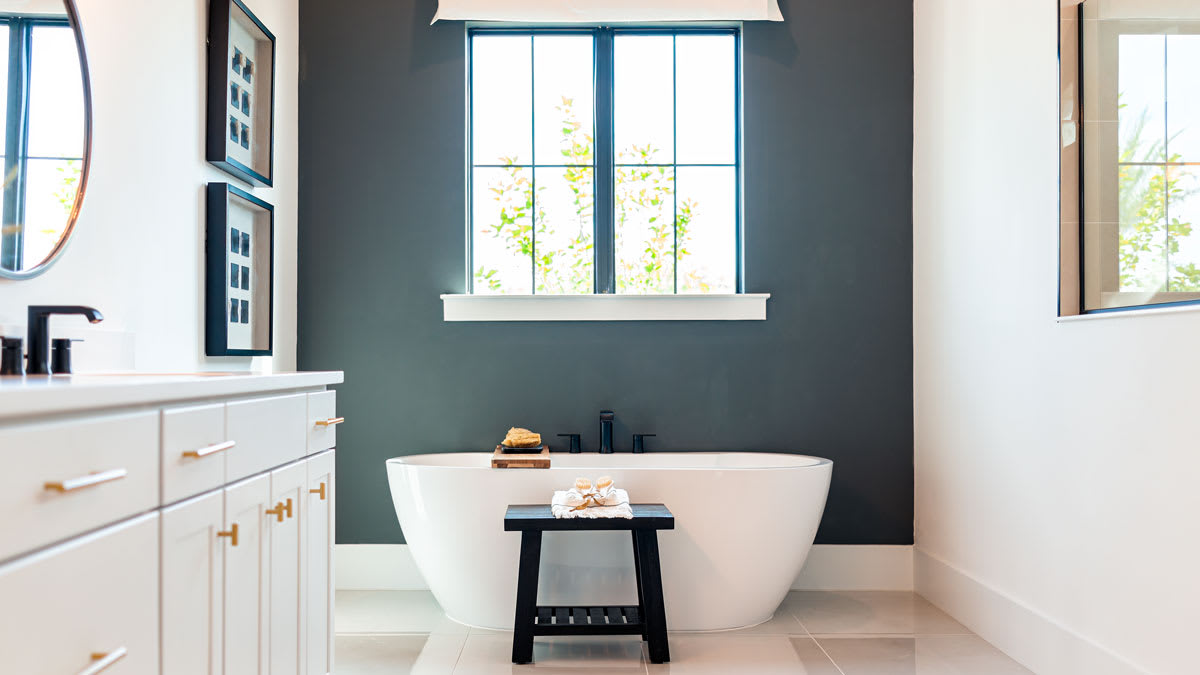Painting a bathroom can be trickier than painting other areas in your house. Unlike larger rooms where furniture and decorative objects can be moved completely out of the way, in a bathroom there’s a lot more maneuvering you have to do as you paint around fixtures like sinks, toilets, tubs, and showers. To get a professional look, even if you’re opting to DIY, follow these helpful tips:
Play with color. Paint manufacturer websites often have tools that allow you to download a photo of your room, then select wall colors until you find a look you like. Think about your bathroom vanity, too, and whether it needs a fresh coat of paint. For a bathroom next to a bedroom, consider a color that works well with the bedroom paint color, perhaps a shade that’s lighter or darker. And if white is your go-to color, make sure you pick the right white paint.
Choose the right finish. Satin is more durable and shinier than eggshell and is ideal for a bathroom. It’s also easy to clean. Use it for the walls, ceiling, and even the trim, because many satin finishes are tougher than they once were. Semi-gloss is even tougher and a cinch to clean. It can be used on the walls, ceiling, trim, and vanity—if you don’t mind a shinier look. A satin sheen draws attention to any imperfections on the walls (semi-gloss does so even more), so be sure to prep the walls to get them as smooth as you can.
Wash the walls first. New paint needs a clean, dry surface to adhere to. Existing mildew can prevent fresh paint from properly sticking and can even bleed through the new coat. Remove mildew with a sponge dipped in a solution of one part bleach to three parts water. The room should be well-ventilated while you clean, so open a window or run an exhaust fan. Wipe down the surface with clean water and allow it to dry before painting.
Protect what you aren’t painting. With all their nooks and crannies, small bathrooms can be a challenge to paint. Apply painter’s tape to the edges of areas you don’t want painted. And use a sash brush with a tapered tip. Unlike the bristles on a flat brush, those on a sash brush are cut at a diagonal, making it easier to control.
Paint, then wait. Once you’re done applying the paint, let it dry overnight before using the shower. Otherwise, any water that splashes up or beats down on the newly painted surface can cause the paint to soften and run.
Source link
